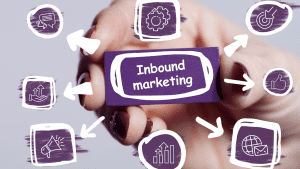Influencer Social Networks and companies
Interview with Claudio Gagliardini
Social media have a history of little more than twenty years, but in our country they only really started to take hold in the second decade of the 21st century. In these ten years, companies have landed en masse on mass channels, but only very few of them have found a sustainable and profitable path. Even today, that of social media marketing is a young discipline and subject to many different interpretations, but one thing is beginning to be clear to everyone: selling on these channels is much less simple and banal than one might imagine. Probably because each reality must find its own recipe, on these platforms, which were born for other purposes. We talk about it with Claudio Gagliardini, co-founder and partner of seidigitale.com, a company that offers many different approaches to communication and marketing on social media.
I don’t really like this definition, which I have referred to more than once as a fascinating oxymoron. Social platforms are not born to do marketing, but to share, interact, relate and compare. Social networks are the home of people and ideas, not a big mall where people go for shopping. This does not exclude that people, in the context of their social activities, which mostly concern entertainment, cannot interact with others (including companies) precisely in relation to their needs, desires, passions and exchanging opinions do not end at all to buy or to mature their decisions and choices. The exact opposite of what too many companies would like to happen on Facebook & amp; Co., which inundate with pounding adv and completely self-referential content.
Questa è una domanda che non può avere una risposta univoca. In linea generale devono usare queste piattaforme per fare ciò per cui sono nate: condividere, interagire, relazionarsi e confrontarsi. Ovviamente tutto questo parte dai contenuti, che però non dobbiamo intendere come mera ideazione e attuazione di un piano editoriale. Quando ho iniziato a scrivere di questa materia la frase più ricorrente era “businesses must become publishers”, ma è molto più complesso e articolato di così. I social non sono stati pensati soltanto per chi produce contenuti, ma per una filiera in cui la content creation è soltanto la scintilla che innesca il tutto. I contenuti sono la benzina di questo motore e la candela in grado di farla esplodere per metterlo in moto e farlo girare, ma un motore fermo sul banco di prova non serve a niente. This is a question that cannot have a single answer. In general, they must use these platforms to do what they were born for: sharing, interacting, relating and confronting each other. Obviously all this starts from the contents, which however we must not understand as a mere conception and implementation of an editorial plan. When I started writing about this subject, the most recurring phrase was “businesses must become publishers”, but it is much more complex and articulated than that. Social media were not designed only for those who produce content, but for a supply chain in which content creation is only the spark that triggers everything. The contents are the gasoline of this engine and the spark plug capable of causing it to explode to set it in motion and make it turn, but an engine stopped on the test bench is useless. This is why I always try to make companies understand that this is a broader process, that it cannot exclusively involve the communication and marketing departments and that it must not be aimed exclusively at promotion and sale.
It would take several pages of text to answer this question, but I try to be succinct: companies must thoroughly study the internet, the web, social media and their dynamics. By doing this, they must understand what the objectives and opportunities of an active presence are on these channels, ranging from the website to social media, from apps to adv, from content to relationships and much more. Following this awareness, which cannot mature as a function of the economic offer from a web agency or a professional, but of a constant training process, the internal communication and marketing team must involve the whole company in a transformation path. At the heart of it, not social media or even the Net, but people, identifying the methods of contact and designing a new relationship management model, integrating social media (and more) into CRMs and business processes. Then comes all the rest: definition of objectives and KPIs, design and production of content, creation and management of the community, identification of reference figures on the various platforms (enthusiasts, experts, “influencers”, brand ambassadors …) and, only at the end, mere operation.
There are many, which intertwine with each other in a deleterious way; little or no knowledge of the Network and its platforms by corporate decision makers; the little or no willingness to review internal processes and to grant their collaborators the opportunity, time and resources to work on platforms; the inability to develop a holistic view; the scarce or no willingness to train their managers and collaborators; the belief that it is only a question of budget and allocation; the urgency to obtain tangible results, which in 99% of cases we would like to coincide with an increase in sales and turnover. Another important obstacle is determined by the bad example given over the years by companies that have focused exclusively on the viral potential of the Internet, ending up focusing exclusively on what they mistakenly define as real time marketing, but which mostly takes the form of bad scraps of satire, too often free and over the top, as well as wandering and without any real purpose.
In general, the willingness to integrate their contribution into a broader process, which cannot ignore the involvement of external resources such as partners. Offering a product or service is no longer enough and no company should today consider itself as a mere supplier of products or services, with no added value other than reliability, quality and price (i.e. the necessary, but not sufficient, conditions for which you can fit into a range of choices).
Claudio Gagliardini
Seidigitale.com
Latest contributions
News
Services
-
 Mobile ApplicationsDeveloping quality mobile applications isn't easy at all. Find out how to take this opportunity.
Mobile ApplicationsDeveloping quality mobile applications isn't easy at all. Find out how to take this opportunity. -
 Websites developmentThe websites development service allows you to get the development of high quality websites and cloud applications. Find out more...
Websites developmentThe websites development service allows you to get the development of high quality websites and cloud applications. Find out more... -
 Marketing and CommunicationDiscover the professional Marketing and Communication services: Social Media Marketing, Google Ads and Search Engine Optimization (SEO).
Marketing and CommunicationDiscover the professional Marketing and Communication services: Social Media Marketing, Google Ads and Search Engine Optimization (SEO). -
 Content Marketing & Content CreationContent Marketing, with the creation of specific content, is fundamental in maximizing the quality of the User Experience and SEO.
Content Marketing & Content CreationContent Marketing, with the creation of specific content, is fundamental in maximizing the quality of the User Experience and SEO. -
 Technological PlatformsTechnological Platforms for Domain Management, DNS, Email, Hosting and Database Management
Technological PlatformsTechnological Platforms for Domain Management, DNS, Email, Hosting and Database Management -
 European Calls for Digital TransformationThe European calls for digital transformation represent important opportunities for companies in the digital sector.
European Calls for Digital TransformationThe European calls for digital transformation represent important opportunities for companies in the digital sector.















